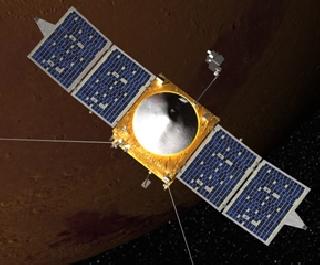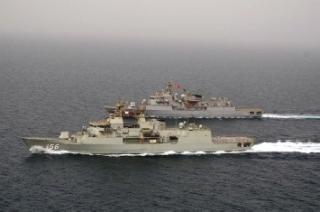
An artist's conception of the MAVEN spacecraft orbiting Mars. Photo: NASA
WASHINGTON (BNS): NASA’s Mars Atmosphere and Volatile EvolutioN (MAVEN) mission has successfully completed its Mission Critical Design Review (CDR).
MAVEN, scheduled for launch in late 2013, will be the first mission devoted to understanding the Martian upper atmosphere.
The goal of MAVEN is to determine the history of the loss of atmospheric gases to space through time, providing answers about Mars climate evolution. It will accomplish this by measuring the current rate of escape to space and gathering enough information about the relevant processes to allow extrapolation backward in time.
"MAVEN will make the right measurements to allow us to answer this question. We’re in the middle of the hard work right now—building the instruments and spacecraft—and we’re incredibly excited about the science results we’re going to get from the mission,” Dave Mitchell, MAVEN Project Manager at NASA Goddard Space Flight Center in Greenbelt, Md, said.
MAVEN will carry three instrument suites. The Particles and Fields Package, built by the University of California at Berkeley with support from CU/LASP and NASA Goddard, contains six instruments that will characterize the solar wind and the ionosphere of the planet. The Remote Sensing Package, built by CU/LASP, will determine global characteristics of the upper atmosphere and ionosphere. The Neutral Gas and Ion Mass Spectrometer, provided by NASA Goddard, will measure the composition and isotopes of neutral ions.
The University of California-Berkeley Space Sciences Laboratory will build instruments for the mission. NASA’s Jet Propulsion Laboratory, Pasadena, California, will provide Programme management via the Mars Programme Office, as well as navigation support, the Deep Space Network, and the Electra telecommunications relay hardware and operations.
 Previous Article
Previous Article Next Article
Next Article













The Indian Air Force, in its flight trials evaluation report submitted before the Defence Ministry l..
view articleAn insight into the Medium Multi-Role Combat Aircraft competition...
view articleSky enthusiasts can now spot the International Space Station (ISS) commanded by Indian-American astr..
view article